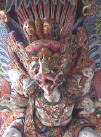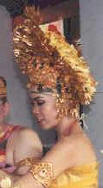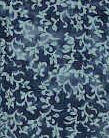Bali Art
Through the centuries
Bali
has seen the emergence and
transformation of its arts. Balinese
art has been practiced and used as an
integral part of the
Hindu religion since its arrival in the
 first century.
While some of the Balinese arts have remained relatively unchanged over
the centuries like dance and music others have evolved into forms of expression
only found on this beautiful island. These artistic changes are a result of
influences brought here from foreign lands and the artistic abilities of the
indigenous population. Influential factors in the evolution of Bali art include
the 200 year Dutch occupation and later the western teachings of other Western
and Eastern counties. To comprehend the vast body of art known as “Balinese
Art” you need to look into Bali’s ancient Hindu religion and the works of
its modern artisans.
first century.
While some of the Balinese arts have remained relatively unchanged over
the centuries like dance and music others have evolved into forms of expression
only found on this beautiful island. These artistic changes are a result of
influences brought here from foreign lands and the artistic abilities of the
indigenous population. Influential factors in the evolution of Bali art include
the 200 year Dutch occupation and later the western teachings of other Western
and Eastern counties. To comprehend the vast body of art known as “Balinese
Art” you need to look into Bali’s ancient Hindu religion and the works of
its modern artisans.
The arts of Dance and Music have both modern and historical branches. Dances
that have remained relatively unchanged in Bali are those that are
 closely tied
to the Hindu religion. Dances like
Barong, Keris, and Rejang
are performed more for the gods themselves than the villagers that
perform and watch these performances. Each of these dances and numerous other
ceremonies like weddings, cremations, and rites of passage have specific music
pieces that have been passed down through the generations unchanged. Dances like
Kecak,
Ramayana, and
Legong are dances that have come into being as either
entertainment or to teach lessons. As these dances are not directly tied to the
religion of the Island the actual dance movements and the musical accompaniment
of each continue to evolve.
closely tied
to the Hindu religion. Dances like
Barong, Keris, and Rejang
are performed more for the gods themselves than the villagers that
perform and watch these performances. Each of these dances and numerous other
ceremonies like weddings, cremations, and rites of passage have specific music
pieces that have been passed down through the generations unchanged. Dances like
Kecak,
Ramayana, and
Legong are dances that have come into being as either
entertainment or to teach lessons. As these dances are not directly tied to the
religion of the Island the actual dance movements and the musical accompaniment
of each continue to evolve.
Balinese Dance Masks
Gamelan and Other Bali Music Instruments
 Traditional
Bali
paintings appear to be very two dimensional and produced with
non-vivid natural inks. These traditional artworks were teaching tools more than
what we now consider “works of art” so many consider these pieces primitive.
In the 1920’s and 1930’s Western painters such as Walter Spies and Rudolf Bonnet
brought techniques and materials to Bali that allowed the Balinese artist to
express themselves in pieces now seen to be “works of art” and far from
primitive.
Traditional
Bali
paintings appear to be very two dimensional and produced with
non-vivid natural inks. These traditional artworks were teaching tools more than
what we now consider “works of art” so many consider these pieces primitive.
In the 1920’s and 1930’s Western painters such as Walter Spies and Rudolf Bonnet
brought techniques and materials to Bali that allowed the Balinese artist to
express themselves in pieces now seen to be “works of art” and far from
primitive.
Traditional Paintings of Bali
Modern Paintings of Bali
 Carving stone and
wood in Bali maybe the two arts that have evolved the most
from their
religious origin. Until recently sculptures in Bali produced religious works for
temples and other religious areas. With the arrival of western tourist and the
market for all types of artistic sculptures the variety of carvings in both wood
and stone has grown immensely. Today traditional carvers creating temple
decorations and deities are still common but they are outnumbered by the number
of carvers creating artworks for the domestic and international markets.
Carving stone and
wood in Bali maybe the two arts that have evolved the most
from their
religious origin. Until recently sculptures in Bali produced religious works for
temples and other religious areas. With the arrival of western tourist and the
market for all types of artistic sculptures the variety of carvings in both wood
and stone has grown immensely. Today traditional carvers creating temple
decorations and deities are still common but they are outnumbered by the number
of carvers creating artworks for the domestic and international markets.
 Pottery in Bali is mainly Terracotta
at this time due to the kilns that are
required to fire clay at high temperatures. Although Indonesia had a large
domestic and international market for ceramic products these items are mainly
building and commercial materials. Currently Bali is experiencing growth in
ceramic work but the expense of electric and gas fired kilns is a major block
for most home industry artists. Although there are a few artisans on the island
that are creating both terracotta and ceramic pieces most of the pottery found
on the island is either from Java or Lombok.
Pottery in Bali is mainly Terracotta
at this time due to the kilns that are
required to fire clay at high temperatures. Although Indonesia had a large
domestic and international market for ceramic products these items are mainly
building and commercial materials. Currently Bali is experiencing growth in
ceramic work but the expense of electric and gas fired kilns is a major block
for most home industry artists. Although there are a few artisans on the island
that are creating both terracotta and ceramic pieces most of the pottery found
on the island is either from Java or Lombok.
Jewelry has historically been part of Balinese life.
In the palaces of the kings of Bali it was common for royalty to wear elaborate
headdresses, necklaces, and bracelets every day. It was also common for high
cast members dwelling out side the palaces to own jewelry but these pieces were
usually reserved for religious ceremonies and other formal occasions. The
Balinese wear intricate and heavy jewelry pieces for weddings these pieces are frequently seen in pictures of Bali were a
beautiful island girl has numerous gold flowers woven into here hair. Men also
wear special necklaces, armbands, bracelets, and headdresses for weddings but
they are not the same as those worn by the women.
 Today it is common to see Balinese Men and some women wearing large rings set
with semi –precious stones. These rings were originals worn by Holly men,
Healers, and Guards as they were attributed with spirits and supernatural
powers. Today you will find that most Balinese men have at least one of these
rings if not more that they wear every day.
Today it is common to see Balinese Men and some women wearing large rings set
with semi –precious stones. These rings were originals worn by Holly men,
Healers, and Guards as they were attributed with spirits and supernatural
powers. Today you will find that most Balinese men have at least one of these
rings if not more that they wear every day.
The Jewelry produced in Bali has changed greatly over the years to where it is
today. Today you will find master craftsmen producing one of a kind hand made
gold and silver pieces as well as cast piece for international markets.
Generally Bali is known for its hand made jewelry pieces as the fabrication
machines are not in place to compete with the cast jewelry manufactures in
Thailand and China.
 Traditional Ikat weavings are the only type or material that is truly produced
in Bali. These pieces are supposedly magical and hold supernatural powers. The
art of Ikat weaving in practiced by few in Bali but those who still practice
this art demand high prices for pieces as the creation and oxidation of the
pieces can take years.
Traditional Ikat weavings are the only type or material that is truly produced
in Bali. These pieces are supposedly magical and hold supernatural powers. The
art of Ikat weaving in practiced by few in Bali but those who still practice
this art demand high prices for pieces as the creation and oxidation of the
pieces can take years.
Currently textile are commonly dyed in Bali by traditional Batik methods while
numerous garment producers sew these materials into beautiful piece of clothing.
Due to western demand for affordable decorations the art of Bali has found its
way into the Handicraft
market be it inexpensive paintings or costume jewelry Bali is known through out
the world as being a source for inexpensive handicrafts of all types.
For more information on Bali Art please
visit www.art-export.com or
www.artexport.biz
 first century.
While some of the Balinese arts have remained relatively unchanged over
the centuries like dance and music others have evolved into forms of expression
only found on this beautiful island. These artistic changes are a result of
influences brought here from foreign lands and the artistic abilities of the
indigenous population. Influential factors in the evolution of Bali art include
the 200 year Dutch occupation and later the western teachings of other Western
and Eastern counties. To comprehend the vast body of art known as “Balinese
Art” you need to look into Bali’s ancient Hindu religion and the works of
its modern artisans.
first century.
While some of the Balinese arts have remained relatively unchanged over
the centuries like dance and music others have evolved into forms of expression
only found on this beautiful island. These artistic changes are a result of
influences brought here from foreign lands and the artistic abilities of the
indigenous population. Influential factors in the evolution of Bali art include
the 200 year Dutch occupation and later the western teachings of other Western
and Eastern counties. To comprehend the vast body of art known as “Balinese
Art” you need to look into Bali’s ancient Hindu religion and the works of
its modern artisans.




